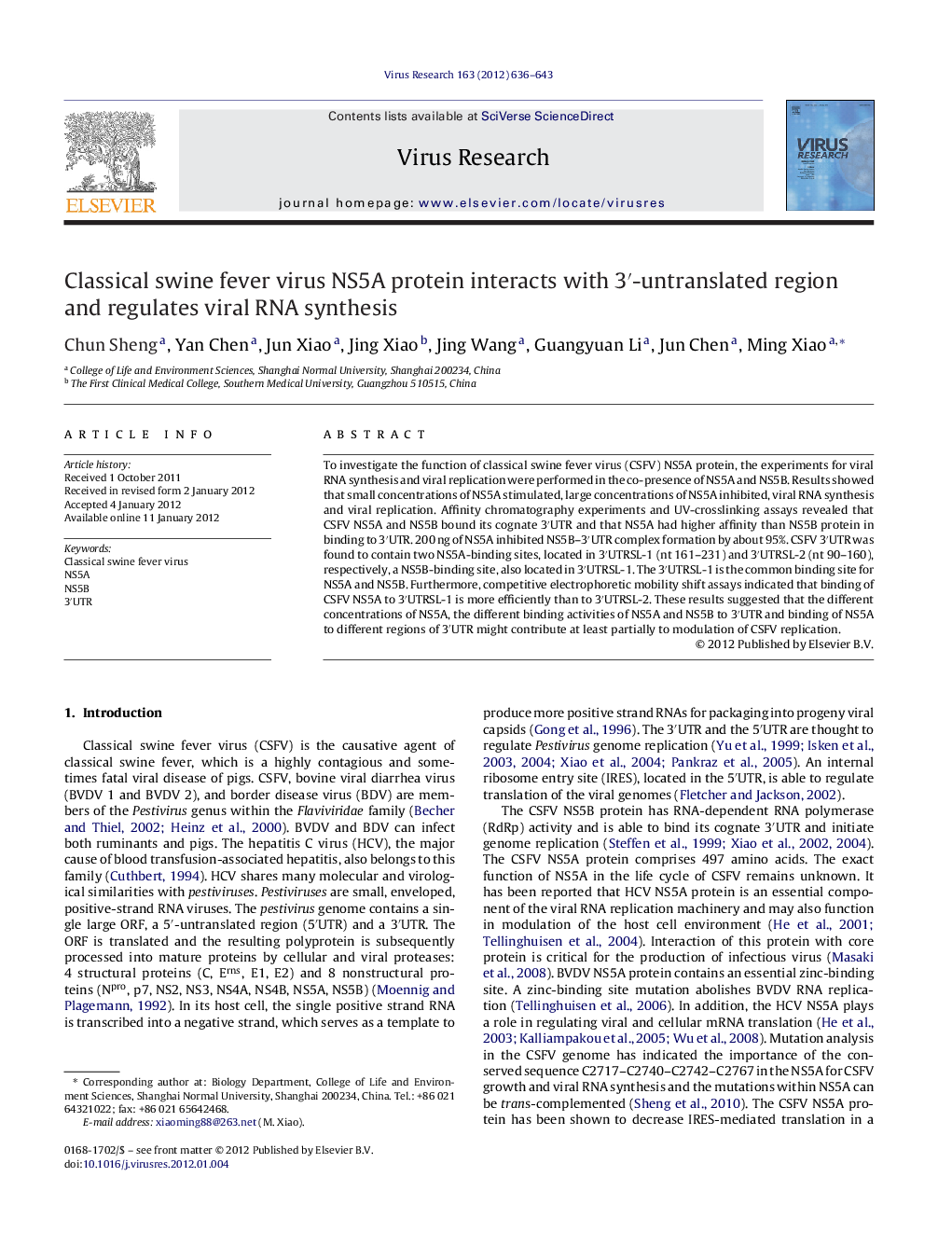| Article ID | Journal | Published Year | Pages | File Type |
|---|---|---|---|---|
| 3428911 | Virus Research | 2012 | 8 Pages |
To investigate the function of classical swine fever virus (CSFV) NS5A protein, the experiments for viral RNA synthesis and viral replication were performed in the co-presence of NS5A and NS5B. Results showed that small concentrations of NS5A stimulated, large concentrations of NS5A inhibited, viral RNA synthesis and viral replication. Affinity chromatography experiments and UV-crosslinking assays revealed that CSFV NS5A and NS5B bound its cognate 3′UTR and that NS5A had higher affinity than NS5B protein in binding to 3′UTR. 200 ng of NS5A inhibited NS5B–3′UTR complex formation by about 95%. CSFV 3′UTR was found to contain two NS5A-binding sites, located in 3′UTRSL-1 (nt 161–231) and 3′UTRSL-2 (nt 90–160), respectively, a NS5B-binding site, also located in 3′UTRSL-1. The 3′UTRSL-1 is the common binding site for NS5A and NS5B. Furthermore, competitive electrophoretic mobility shift assays indicated that binding of CSFV NS5A to 3′UTRSL-1 is more efficiently than to 3′UTRSL-2. These results suggested that the different concentrations of NS5A, the different binding activities of NS5A and NS5B to 3′UTR and binding of NS5A to different regions of 3′UTR might contribute at least partially to modulation of CSFV replication.
► We observed that CSFV NS5A regulated synthesis of viral RNA. ► NS5A was stronger than NS5B protein in binding to 3′UTR. ► CSFV 3′UTR contain two NS5A-binding sites, a NS5B-binding site. ► Binding of CSFV NS5A to 3′UTRSL-1 is more efficiently than to 3′UTRSL-2.
